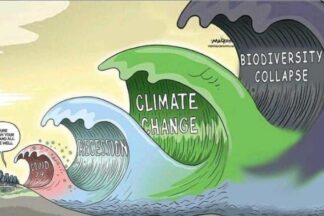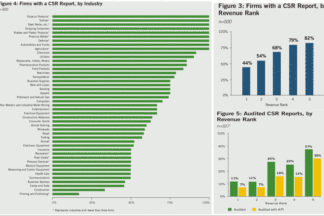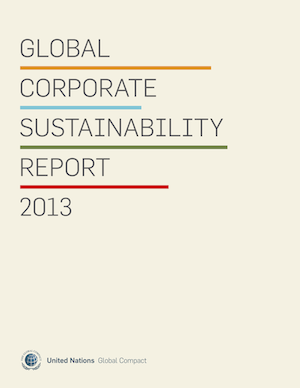After some results at the COP in Vancouver, as well as the release of the first ever Science -Based Targets for Nature (SBTN) – finally (!) the recommendations by the TNFD (Task Force for nature-based financial disclosure) have been released. So the question obviously is, how do these targets address the 5 key drivers of biodiversity erosion eventhough it is only about reporting? Are the TNDF recommendations worth their salt?
You can’t manage what you can’t measure.
This common sense platitude holds true for a lot of things:
Salary, punctuality in trains, inflation. And – of course – sustainability/ESG data.
Measuring alone can be complex enough.
But there are also incentive systems. And the impact they have on aspirations to deliver results.
Where sales targets for instance are as good as always understood as ‘invitation to be exceeded’ (with financial and other bonuses resulting from overachievement) the near opposite holds true for ESG/sustainability related KPIs.
And that absolutely must change.
For every single person in every single company.
KPI priorities must be flipped on their heads.
It's a funny state of things: One where investors complain that ESG data is not standardised; where at the same time companies – and notably their boards – complain that investors do not ask for data in a standardised way. And where the very same companies and boards nonetheless prioritise proprietary measurement systems over any other one for their own supply chains and products.
It's a paradox. One that is not efficient, effective, or conducive to impact.
A call to leave politics to the side, focus in impact, and standardise, standardise, standardise.
Reporting on ESG / sustainability dimensions is an issue.
One for the executives in a company across all levels of responsibility.
And one for the board.
For the board indeed even on two accounts, namely:
The metric they require to be reported to; and the metric that eventually find their way into publicly disclosed information of some shape or other.
Unsurprisingly: How seriously a company takes the ESG issue can be inferred from the extent, poignancy, and quality of their reporting.
That again – equally unsurprisingly – says is all about how ESG-savvy their board most likely is. Or, indeed, is not.
Unless the top line of company executives are held accountable for and judged by their contribution to the company’s risk management and mitigation efforts, including importantly CSR and sustainability performance, the company will struggle. Without senior commitment and engagement, the system only ever allows for minor ‘bug fixes’.
The RAGS Challenge Fund ran from 2010 to 2013, and was funded by UK aid from the Department for International Development (DFID).
“Working Together for a Responsible Ready-Made Garment Sector” is the final report of the RAGS Challenge Fund. The report is intended to be a vehicle for sharing the lessons learned during the life of RAGS for a number of audiences, such as government entities, NGOs, trade union
The UN Global Compact (GC) report published at the beginning of September 2013, and which draws a conclusion on its achievements since 2007 (it was launched in 2000), shows that there is a behaviour-versus-statement gap at corporations. This is worrying.
Levi Strauss was the very first apparel brand to establish and publish a code of conduct in its industry in 1991. It was also the very first company to determine global guidelines for water quality standards for their suppliers in 1992.
In the 1990s Nike was caught in a sweatshop scandal showing poor working conditions in the Asian factories of its suppliers.
Today Nike wants to “bring inspiration and innovation to every athlete in the world”. The evolution of the company’s mission is powerful because it adds meaning and purpose to its existence: from “produce”, to “help” to eventually “inspire and innovate”.
On December 14th, PPR published the expert review report on Puma’s Environmental Profit and Loss Account (E P&L). The panel of experts that had been commissioned to undertake the review brought some of the most eminent names in the industry together, among them John Elkington, Peter Bakker, or Pushpam Kumar.







